البحرين

Historic Gulf island nation

The smallest of the Gulf nations, Bahrain is also one of its longest-established, most liberal and has some of its most significant historical sites. It was the first Arabian nation to discover oil in 1932, and gained its independence from Britain in 1971, the same year as Qatar and the UAE. Since 1986 it has been linked by causeway to Saudi Arabia, resulting in its tourism numbers skyrocketing. The country’s name “Bahar-ayn” is Arabic for “two seas”, presumably those at each side of the island, which is only slightly larger than Singapore.
We visited Bahrain in December 2011 for a long weekend while living in the UAE, using the budget airline flyDubai. Our hotel was the newly opened Elite Crystal Hotel in Juffair, built on reclaimed land and handy for the centre of Manama as well as the airport. We rented a car for the weekend which allowed us to explore most of the island very rapidly, and even drive halfway across the causeway to Saudi Arabia.
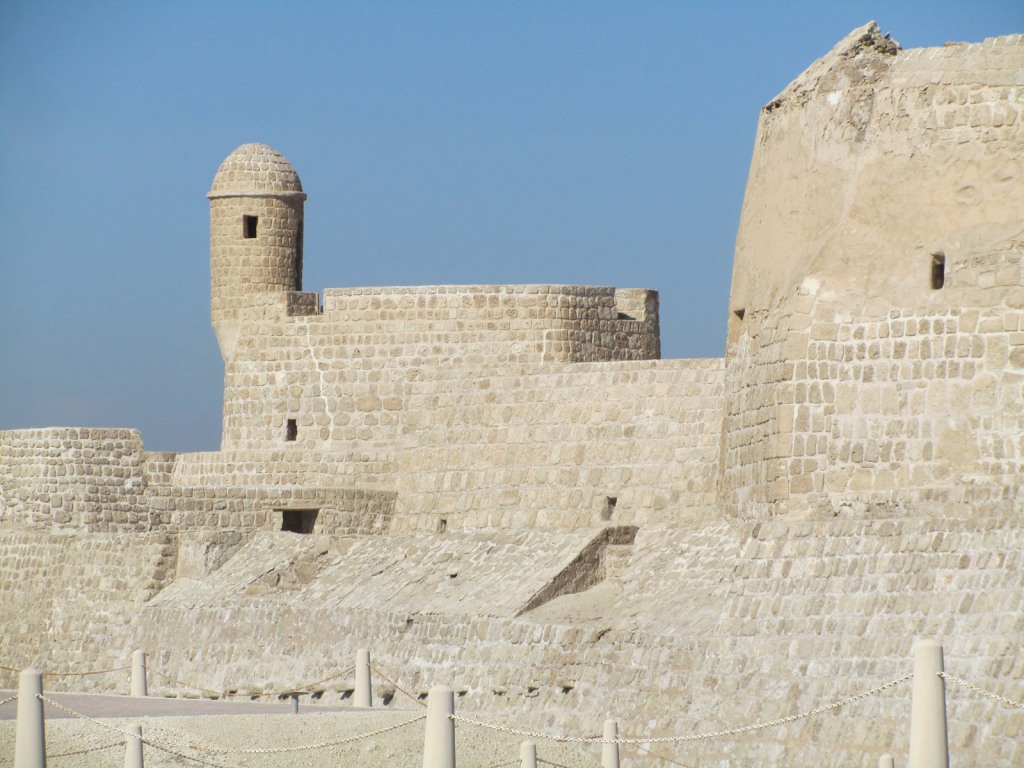
Qal’at al-Bahrain or Bahrain Fort was the seat of the Dilmun people five thousand years ago, and in its current form dates back to the 1500s but has been variously occupied by the Portuguese, Greeks and Persians, amongst others. It is remarkably complete and one of the most comprehensive archaeological sites in the Gulf, certainly the best fort I’ve seen along its shores.
The shallow seas of Bahrain lap up to the edge of the fort, surrounded by palm trees. The fort is a UNESCO World Heritage site.
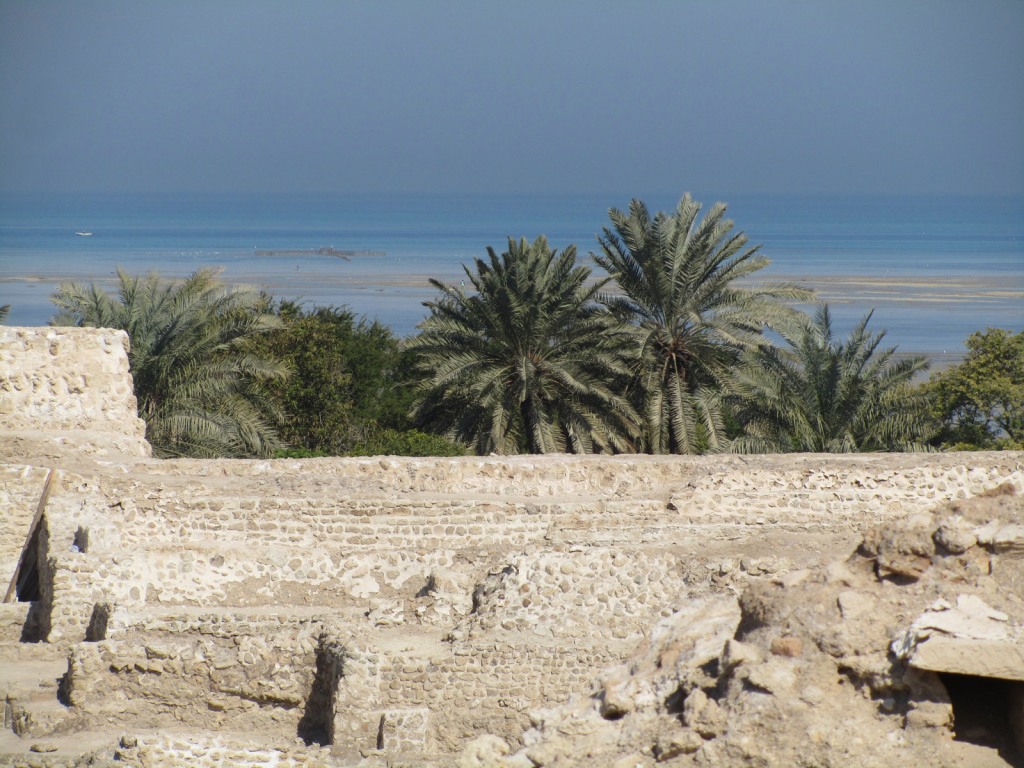

From the walls of the fort, the skyline of Bahrain’s capital, Manama, is clearly visible. Like the rest of the Gulf states (with the notable exception of Oman), Bahrain has rapidly developed a modern thrusting skyline since around 2000.
The centrepiece of modern Manama during my visit was Bahrain Financial Harbour, with its twin ski-jump towers rising 53 storeys, completed in 2007.
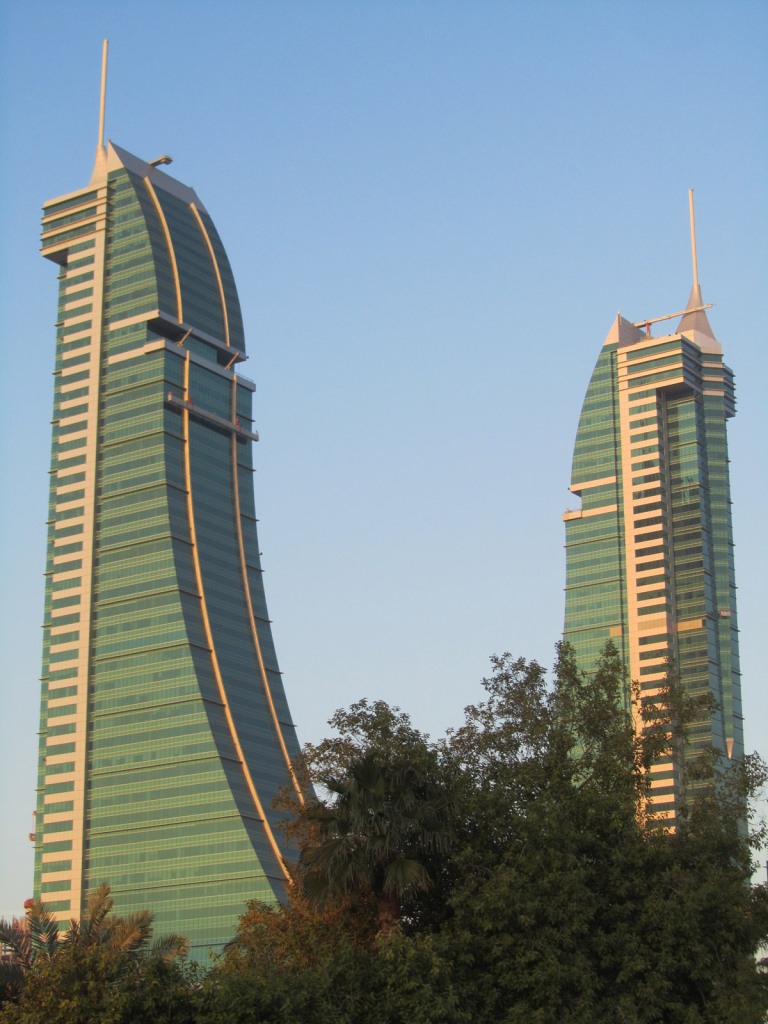
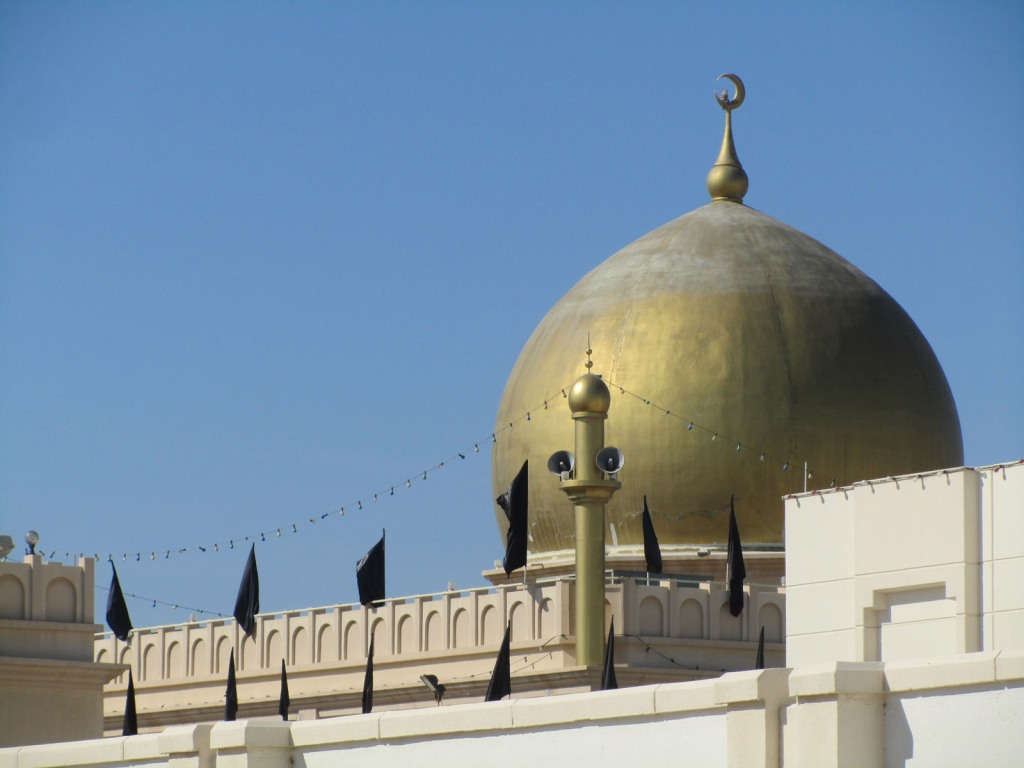
On the trail of more Dilmun sites of interest, we passed through villages lined with black flags outside of Manama such as these, in the village of Saar.
South of Saar, the remains of the Dilmun Temple and the Saar Burial Mounds are open for exploration. These walls are parts of the Dilmun village, and were only discovered in 1977.
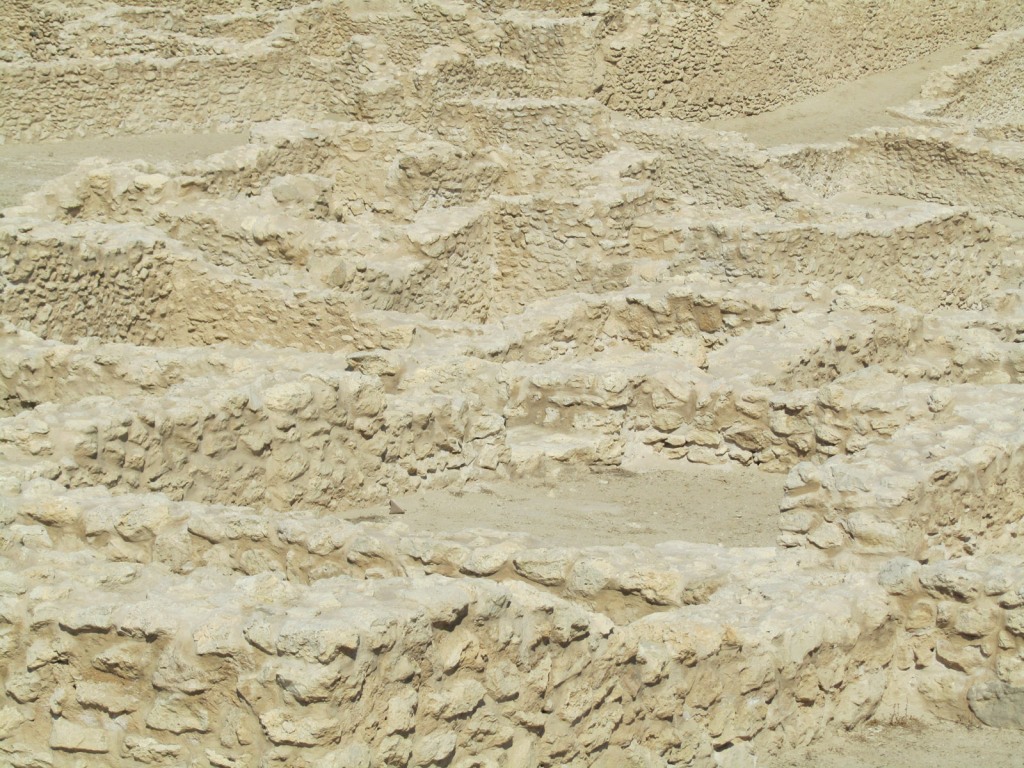
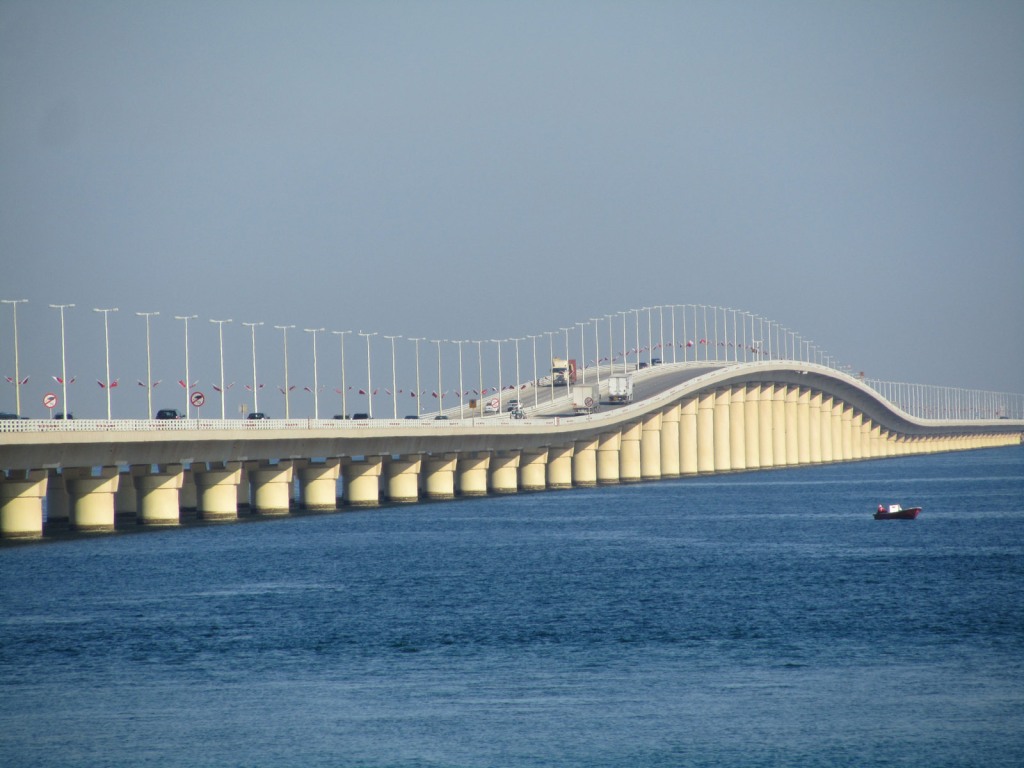
The King Fahd Causeway links Bahrain to the Arabian Peninsula at the Saudi Arabian city of Dammam, and at sixteen miles long is one of the world’s longest maritime road crossings. It opened in 1986 and may be joined by a similar causeway linking the other side of Bahrain to the State of Qatar, including a high speed railway line eventually intended to run from Kuwait to Muscat.
Halfway across the King Fahd Causeway is the national frontier between Saudi Arabia and Bahrain. Each side has an observation tower and a McDonald’s, no less. Naturally we didn’t attempt to cross into Saudi Arabia.
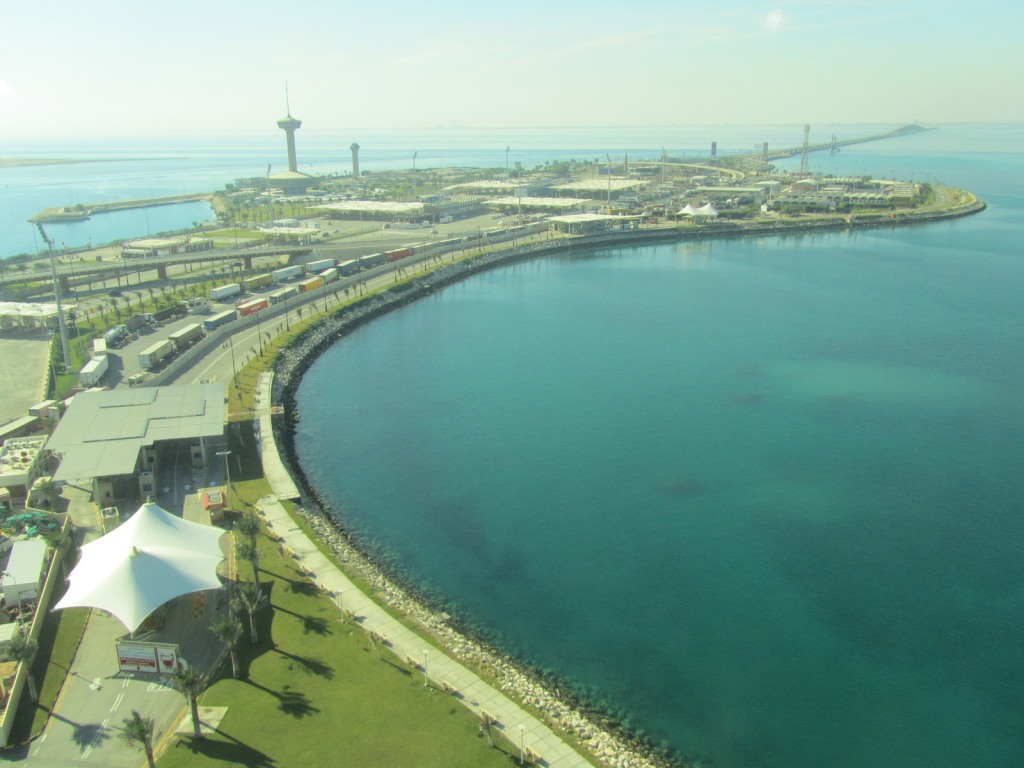

This is probably as close as I’m going to get to visiting Saudi Arabia, although we could of course have visited the restaurant…
Bahrain has been producing oil since the 1930s, and the southern part of the country is littered with beam pumps such as this one near the oil museum. Also known as pumpjacks, nodding donkeys or horsehead pumps, they are used to extract shallow formation oil where there is insufficient pressure to lift it to the surface naturally.


Dar al Naft, the Bahrain Oil Museum explores the country’s recent economic history and fortunes, and is appropriately sited right in the middle of the giant chemistry set that is southern Bahrain. By the time of my 2023 re-write of this page, it wasn’t clear if the museum still operates.
Bahrain’s first oil well is an attraction in itself, and is revered to the point of being reproduced on the Bahraini five dinar banknote. Oil first flowed here in 1931, but at the time of my visit the gauges clearly read zero bar, and the flowline was blinded off. I suspect it can no longer produce.
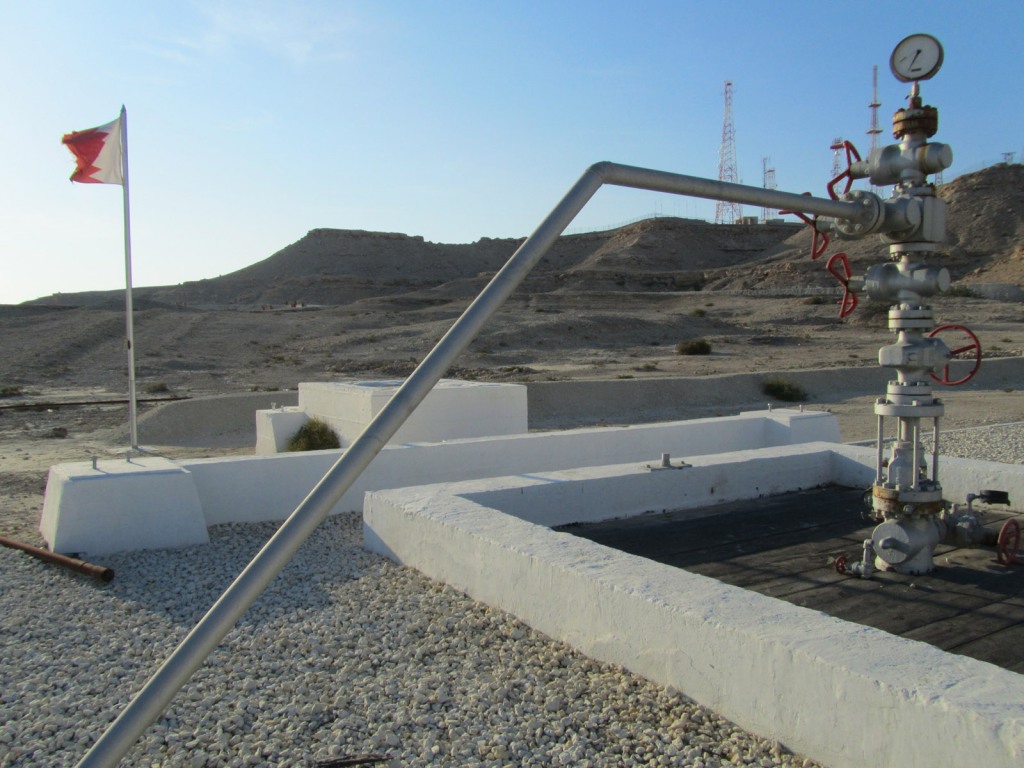
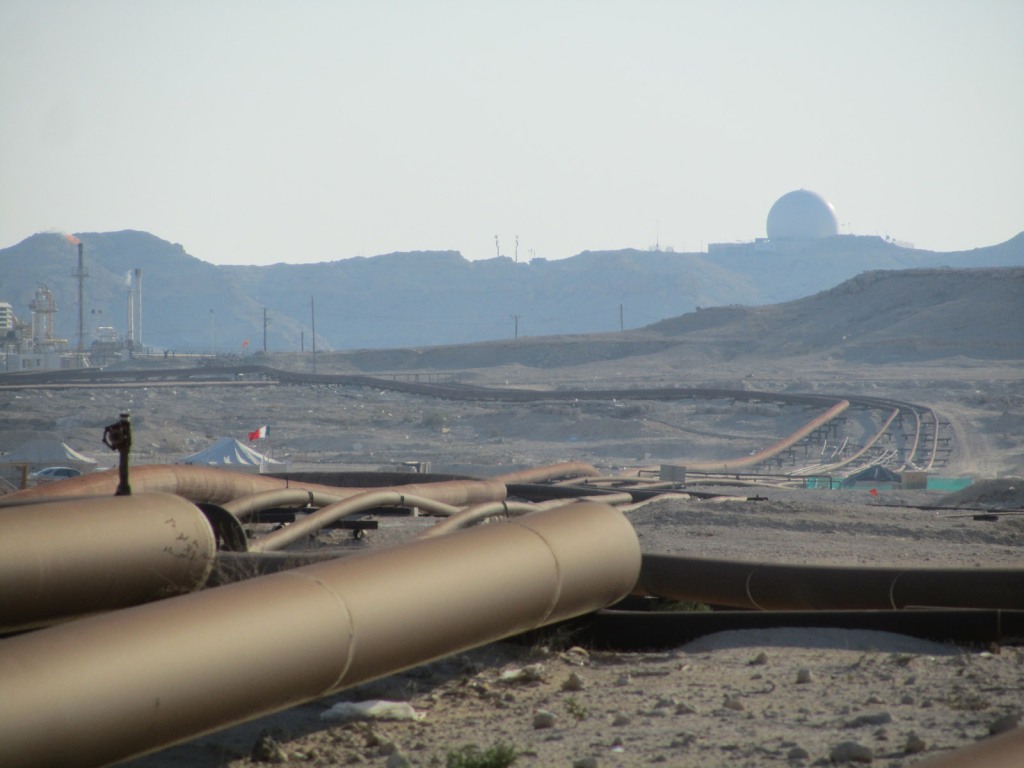
We drove around the southern part of Bahrain on a Friday afternoon, hunting for the Tree of Life. I’ve never seen quite such an integration of life, the land and industry as there is here, with oil and gas pipelines literally laid straight over the sand and ducking under the occasional road.
Driving around this central plain of Bahrain with all the locals zooming about on quad bikes was like negotiating a public refinery. I was very surprised at the lack of protection or security around the pipelines, pumps, wellheads and flare stacks dotting the landscape.
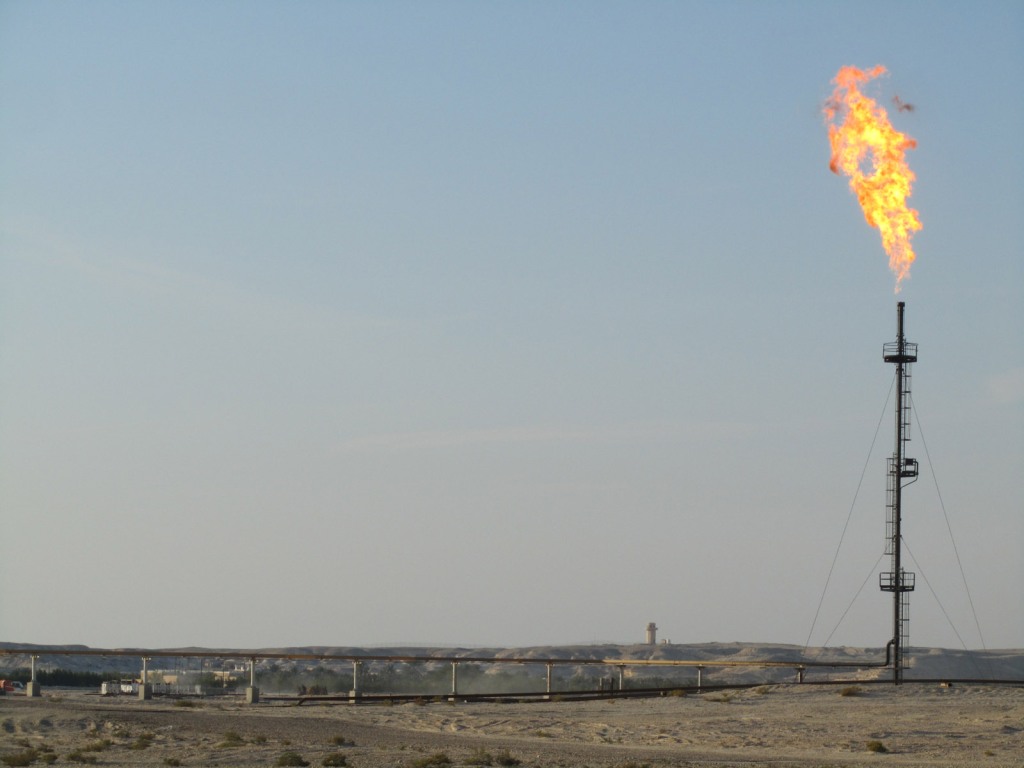
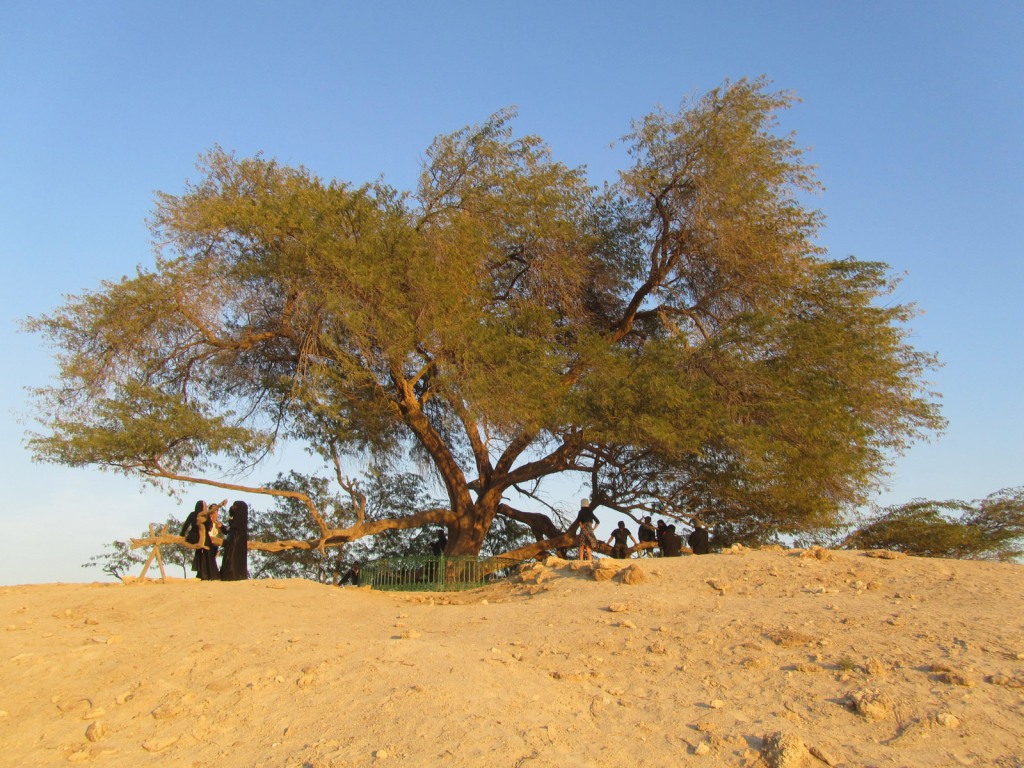
Eventually we found our way to the Tree of Life, a single piece of greenery in the middle of the baked Bahraini desert. It is something of a local mystery how the tree has continued to thrive for over four hundred years within this arid landscape, hence its name and popularity as a local beauty spot.
An early evening shot of cliff faces and the moon in southern Bahrain. There was a lunar eclipse later that same evening.
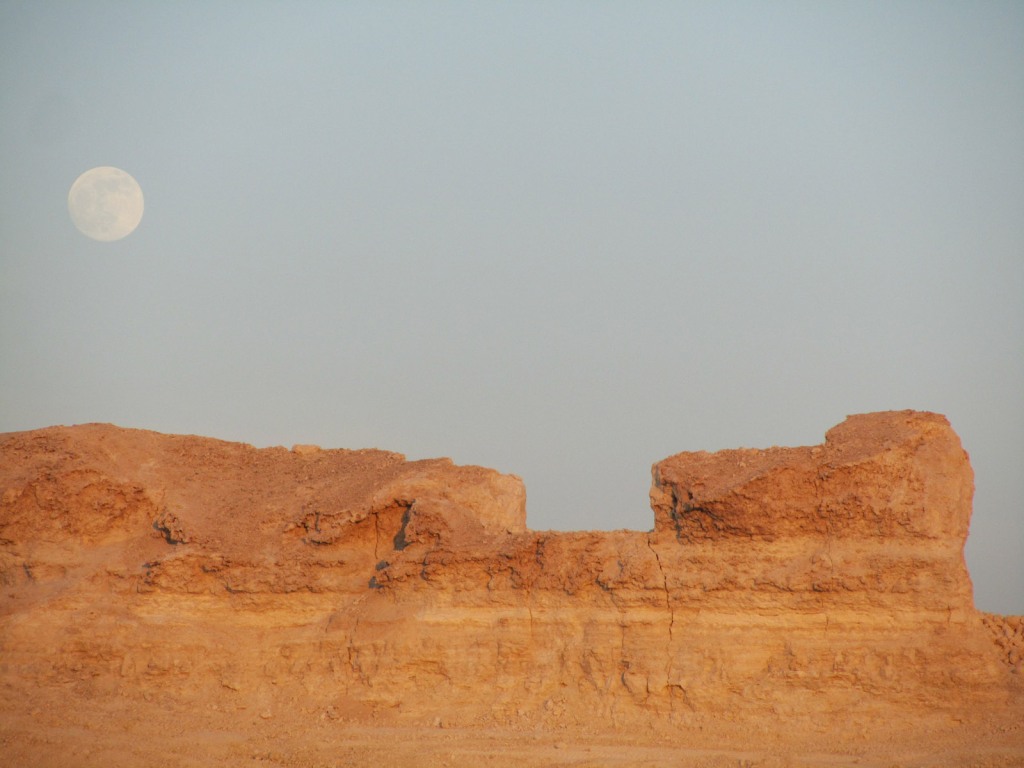
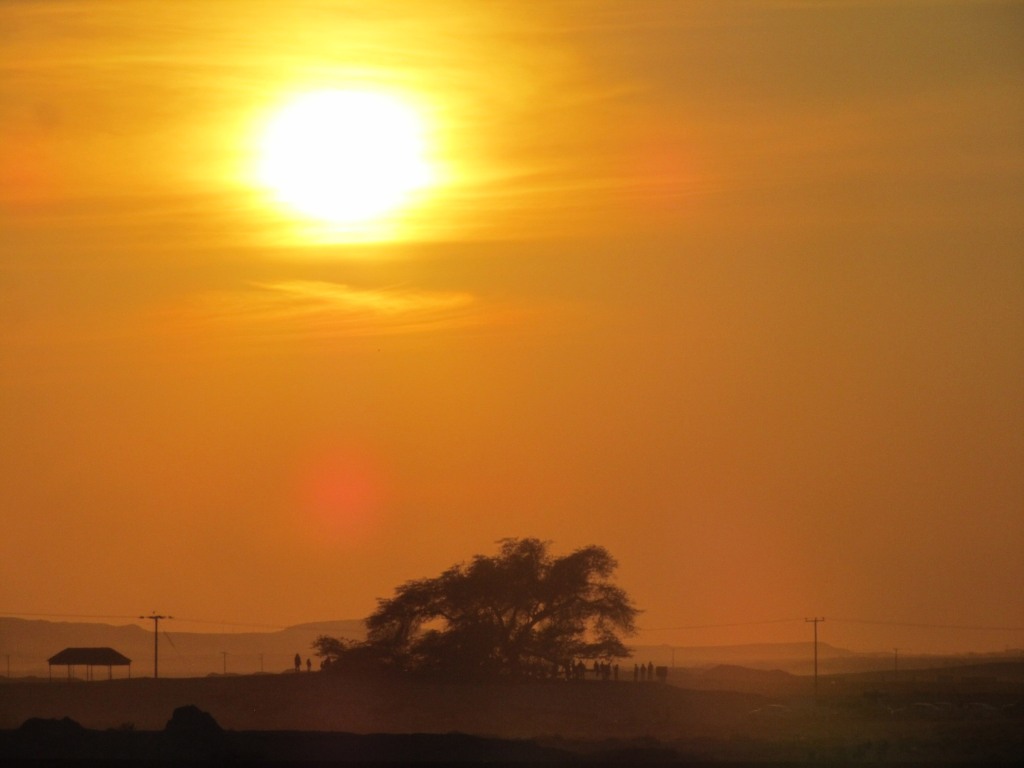
Sunset over the Tree of Life. The concept of a Tree of Life appears in many religious and mythological texts, however this is one of few actual trees credited with this title the world over. It was nominated for the New Seven Wonders of Nature, but lost out to the likes of Iguazu Falls, South Africa’s Table Mountain and Puerto Princesa Underground River in the Philippines.
Back in Manama, and a visit to the Al Fateh Grand Mosque. Constructed in 1987, the mosque is unusual in that its dome is built entirely of fibreglass.

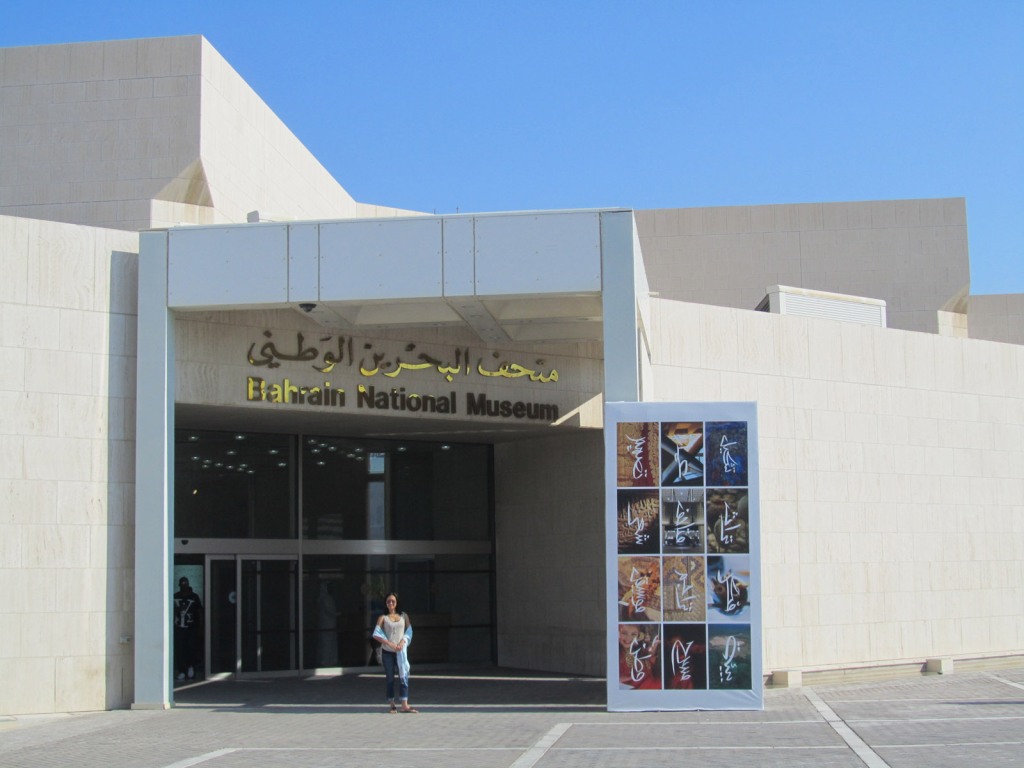
Bahrain National Museum turned out to be a very interesting place to visit, and starts you off with a giant satellite image of the entire country in the museum’s lobby, allowing us to trace our routes driving through the country the previous day. It also has a good, if eerie, exhibition called the Hall of Graves.
The oldest parts of Manama city are in the area of Muharraq, on the same island as the airport. Isa bin Ali House is considered the oldest house in the country, dating back to around 1800. It is the historic residence of the former Sheikh Isa bin Ali al Khalifa and is now open as a museum.


Traditional doorway inside Isa bin Ali House, with Islamic geometric artworks carved into the walls and forming the windows.
Siyadi House is also in Muharraq, and was built by pearl merchant Abdullah bin Isa Siyadi during Bahrain’s golden pearling era. The house also includes a mosque, with the minaret on the left.
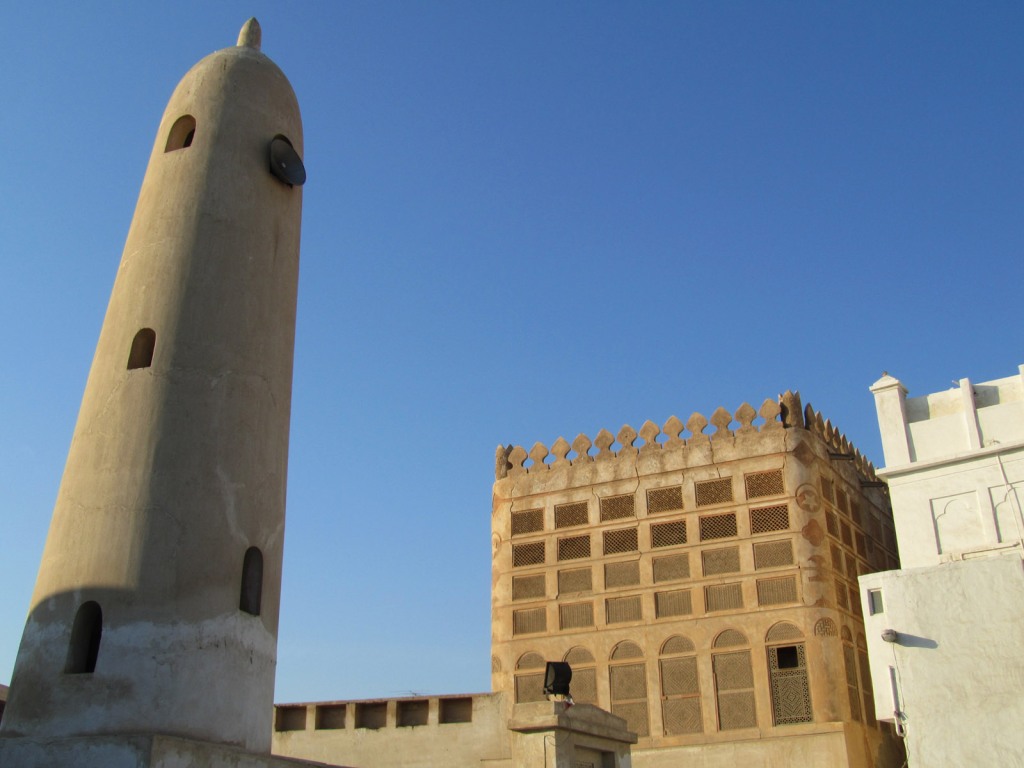

An enormous interactive book forms one of the attractions at the Sheikh Ebrahim Centre for Culture and Research in Muharraq. I spent some time flipping through its digital pages.
Bab al Bahrain is literally the gateway to the country, at the time it was built this was where the boats unloaded at the quayside. These days it still serves as the entrance to the souk – however, following recent land reclamation the sea is now some distance away.
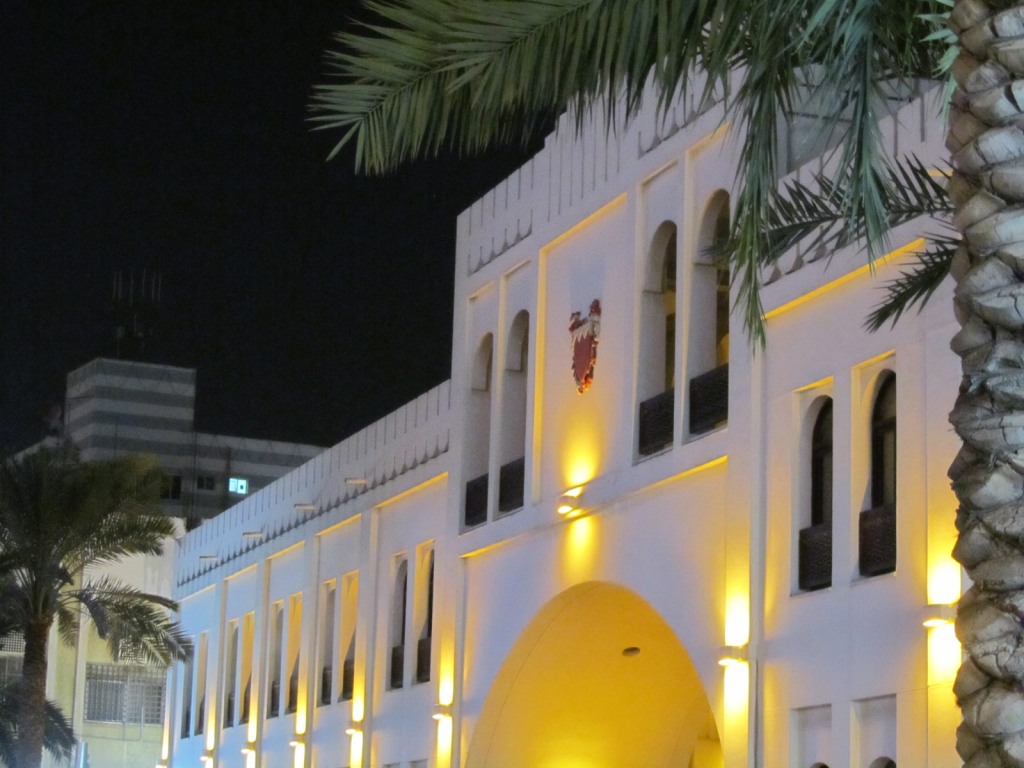

Bahrain World Trade Centre was completed in 2008 and is one of the world’s most sustainable skyscrapers on account of the three large wind turbines integrated into its design.
Created 2012 | Updated 2023
